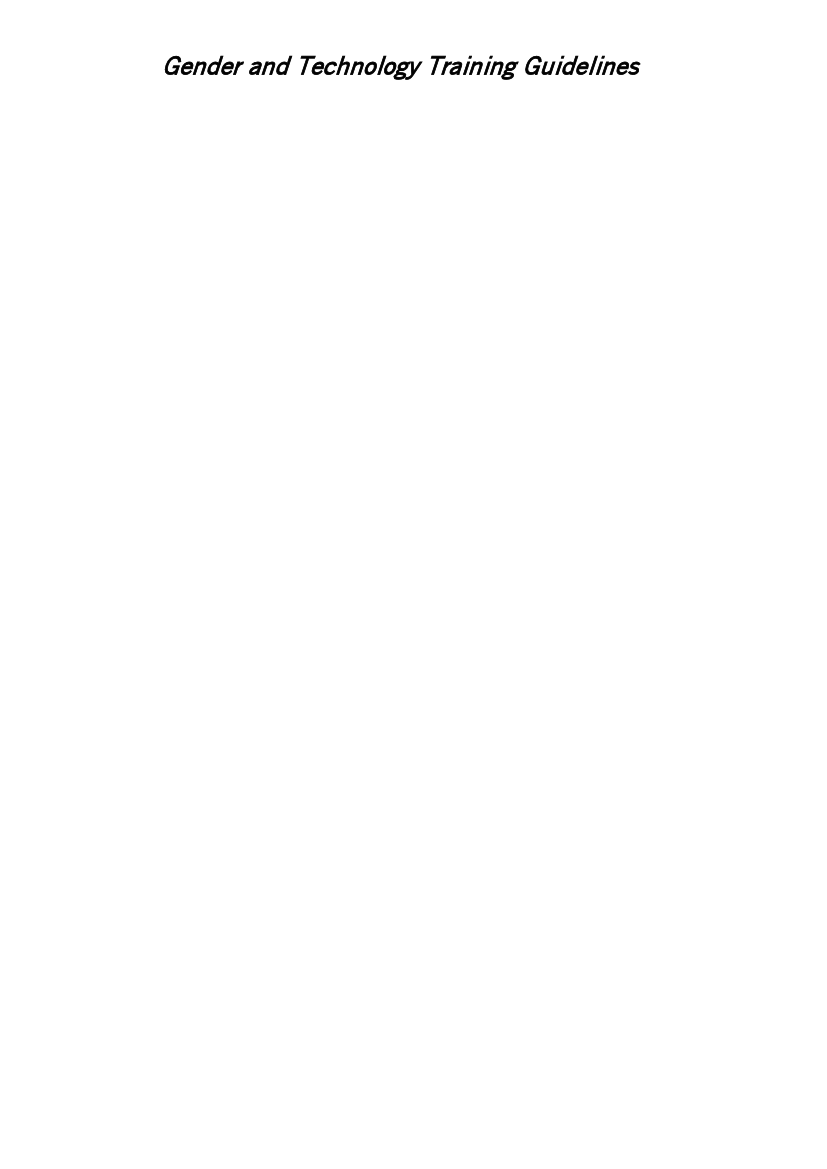
Gender and Technology Training Guidelines
Key Points to consider in adapting ongoing projects
(taken from STEPS IN GENDER ANALYSIS, drawn from Gender Issues in Animal Traction: A
Handbook published by ATNESA and edited by Lotta Sylwander and Roger Mpande,
November 1995)
STEP 1 - IDENTIFYING GENDER ROLES
This step is about the recognition of the different gender roles (productive,
reproductive, community management, community politics) in the activity you are
carrying out. (For information on Gender Roles, refer to earlier handouts)
Consider first
How much is known in your work about:
Why women do some tasks and men others in the communities in which you are
working
How roles and responsibilities differ by age, ethnic or social group
How roles and responsibilities have changed over time
In relation to the above, are there any implications for:
Where the training or other activities take place?
When they are done, including during which seasons?
How much time they take, and at what times of the day?
Content of training?
Adding extra components to the training or other activity?
Consider second
How much is known in your work about:
Which technologies are being used for which activities?
The technical skills and knowledge already possessed by the participants?
Which activities are time consuming and labour intensive?
How these activities are shared between women and men?
In relation to the above, are there any implications for the work that you are doing:
Introducing technology to save women's time in productive tasks?
Introducing technology to save women's labour in productive tasks?
Introducing components that build on existing skills and knowledge?
Introducing components that share existing skills and knowledge?
Consider third
How much is known about the impact of your activity on:
Women’s reproductive and productive tasks
In relation to the above, are there any implications for work that you are doing:
Reducing the labour input specifically into reproductive tasks?
Changing the existing division of work?
Affecting basic services and needs such as water, fuel, and transport?
87